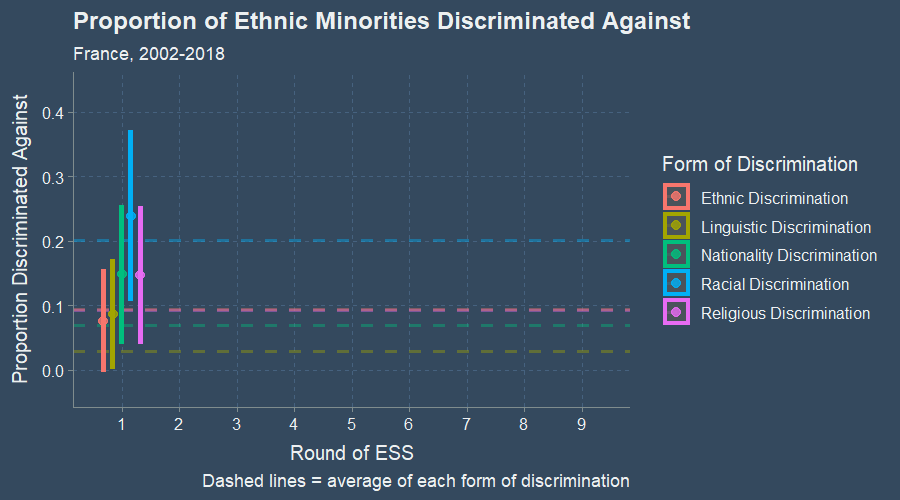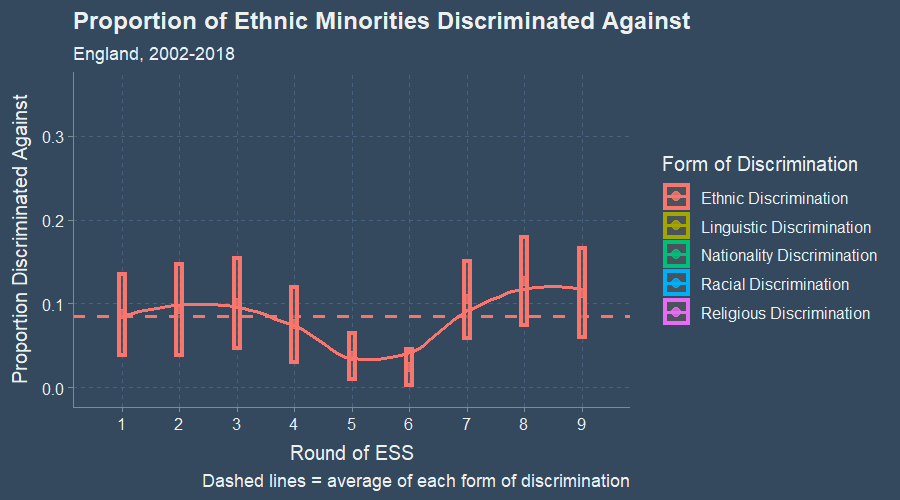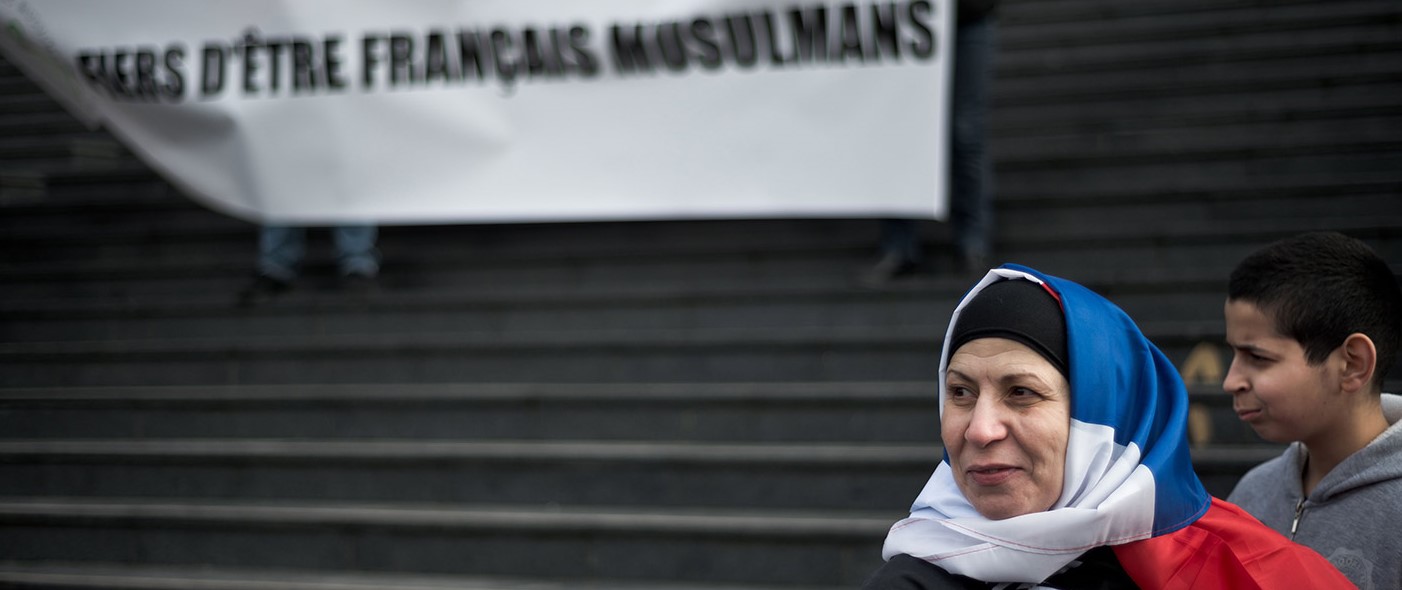Discrimination in Europe
I am working on a project right now for a class at Sciences Po about discrimination. I figured I could look at how people have perceived being discriminated against over time using each round of the European Social Survey and practice my animation and visualization skills. I was really happy with ggthemr who came through with the beautiful “flat dark” theme to match the website theme.
I decided to plot the proportion of ethnic minorities who feel discriminated against in their country for France and England over time. The plots animate over time, and over different forms of discrimination. Bars represent 95% confidence intervals.
Check out the code to create these plots in this GitHub repository.
| Round | 1 | 2 | 3 | 4 | 5 | 6 | 7 | 8 | 9 |
|---|---|---|---|---|---|---|---|---|---|
| Year | 2002 | 2004 | 2006 | 2008 | 2010 | 2012 | 2014 | 2016 | 2018 |
Discrimination of Ethnic Minorities
Discrimination of Minorities in France


The trends in discrimination perceptions for ethnic minorities in France seem to follow a U-shaped trend, dipping in round 4-6 of the ESS, or in 2008-2012. The average proportion is the highest for racial discrimination, which makes sense, given I subset for ethnic minorities in this plot. Teh U-shaped trend in France may have something to do with hysteria about immigrants and Muslims. 9/11 happened a year before the first round, and the Charlie Hebdo and Bataclan attacks in France happened between rounds 7 and 8, in 2015. These events may have caused an effect on people’s perceptions. France’s recurring secularism debate also must cause some variation.
Discrimination of Minorities in England


In England, there is U-shaped curved for racial discrimination that is much more pronounced than in France.
Discrimination of Muslims
I decided to repeat the above step, but by subsetting for Muslims only. In some rounds of the survey, no respondents were Muslim.
Discrimination of Muslims in France


The trends for racial discrimination and religious discrimination for Muslims in France are opposite, with relgious discrimination rising to its highest in 2018 and racial discrimination lowering signficantly over time. Over time, people have been to say they are discriminated against more because of their religion than their race.
The average proportion for racial discrimination and religious dirscrimination (represented by the horizontal dashed lines) are almost equal among French Muslims. In the plots for England below, Muslims report much higher religious didcrimination on average than racial discrimination. For both France and England, Muslims report being discriminated against more because of their religion than their race in 2016-2018.
Discrimination of Muslims in England


We’re missing data for 2004 and 2006 which is when the London bombings happened, so we can’t say too much about the trend over time, and the impact of traumatic events in England, but we do see the similar dip in 2010-2012 that we see in first plots.
Impactful Events, Discrimination, and Perceived Discrimination
The curves dip after 9/11 and before the last 2 rounds which makes me think about the impact of 9/11 and the Charlie Hebdo and Bataclan events. It’s a shame we’re missing data for Muslims in England. Nevertheless, these plots highlight the possible effect of political climate on discrimination and perceived discrimination. I move on to examine how women perceive being discriminated against.
Discrimination of Muslim and Minority Women
Many activists have argued and studies have found that minority women face unique forms of discrimination that their male counterparts do not, for instance, the differential effect of donning the headscarf. Below are the same style plots as above, however, they were created after subsetting for women. The trends differ starkly when you exclude men from the equation. There seems to be a jump after round 2 to 3, which is when the London bombings occurred.
Minority Women in England


There is a much clearer upward trend over time for women in England compared to the trend for both men and women. The U-shape is non-excistent for nationality, racial, and religious discrimination. Overtime, minority women have become discrimianted against more in England or have either chosen to voice the fact that they are being discriminated against more.
Muslim Women in England


Like minority women, Muslim women in England clearly exhibit higher degrees of perceived religious discrimination and racial discrimination over time.
Minority Women in France


The trends for minority women in France exhibit a similar U-shapes to the trends including men and women in France, although the trends are less clear. Racial and religious discrimination peak over time which we have consistently seen for the other other groups.
Muslim Women in France


If we look at Muslim women in France, we don’t see clear U-shapes for all trends for each form of discrimination. It seems only to be the case for racial discrimination. Again, racial and religious discrimination peak, and are above average in the last three years.




